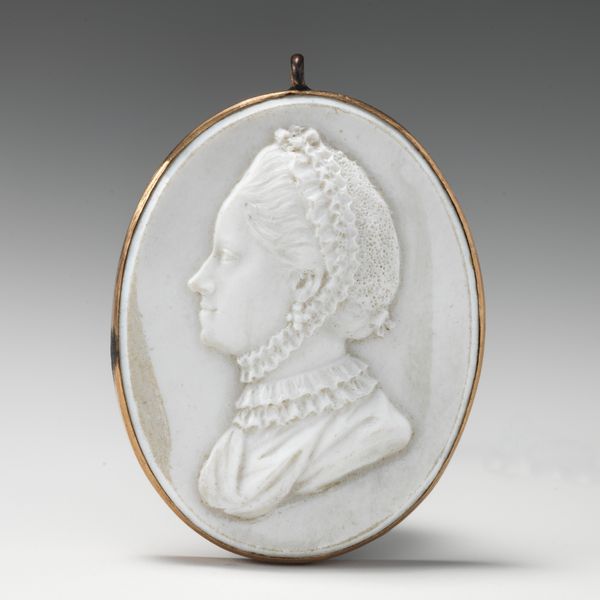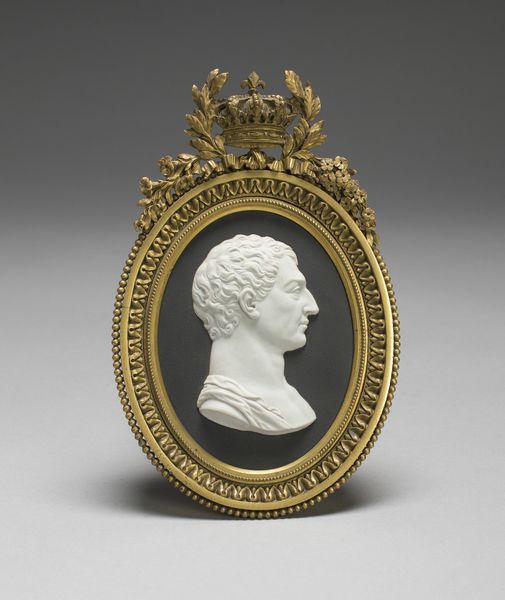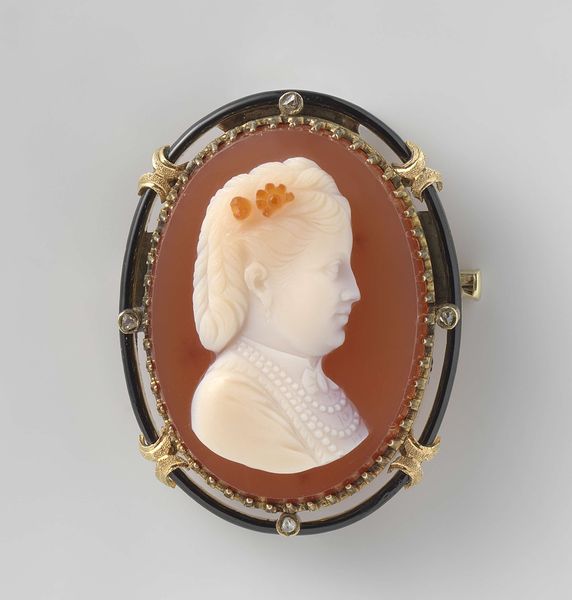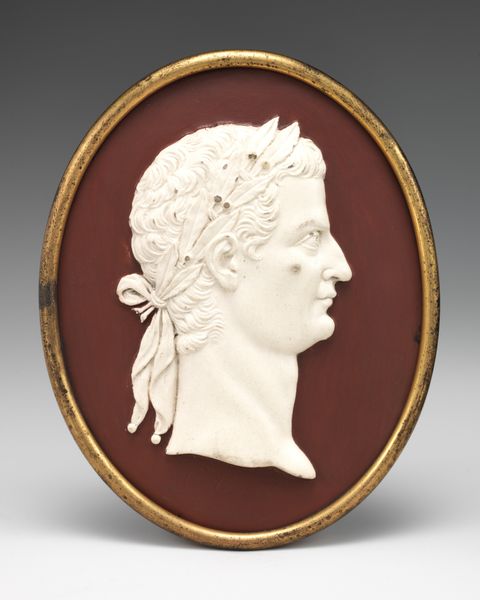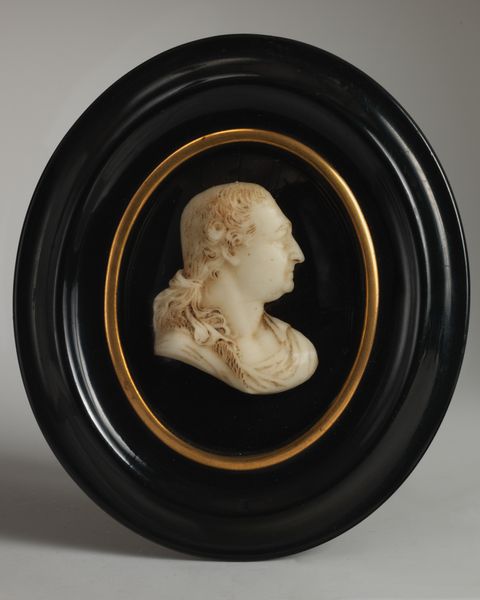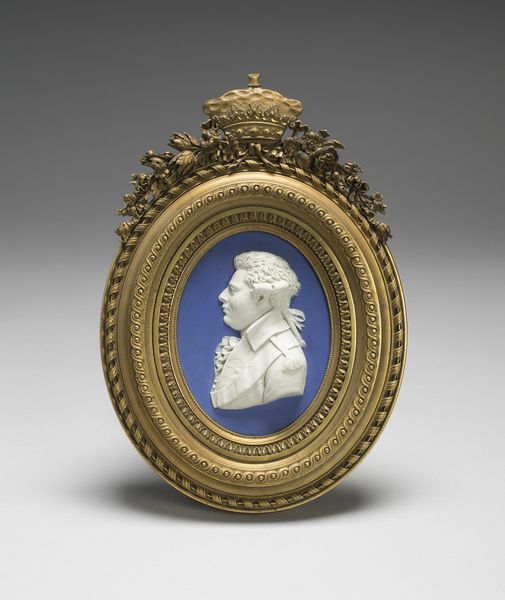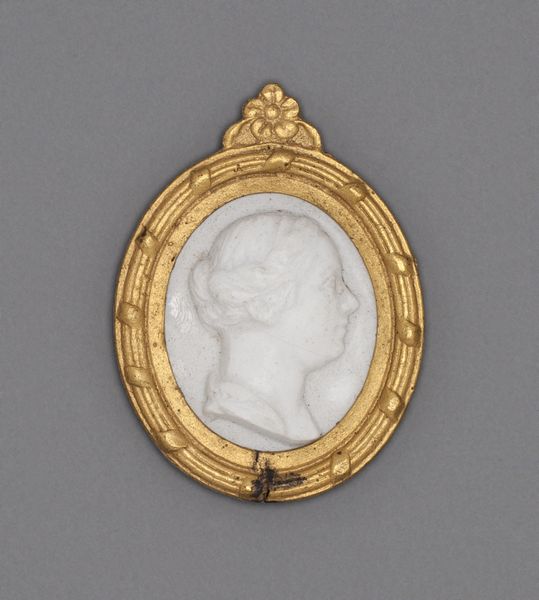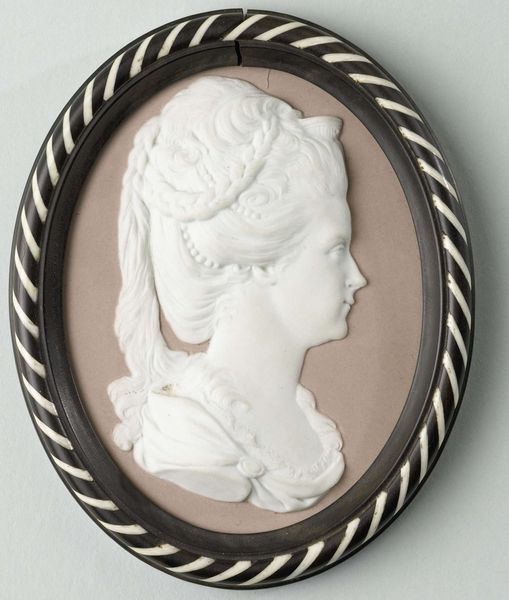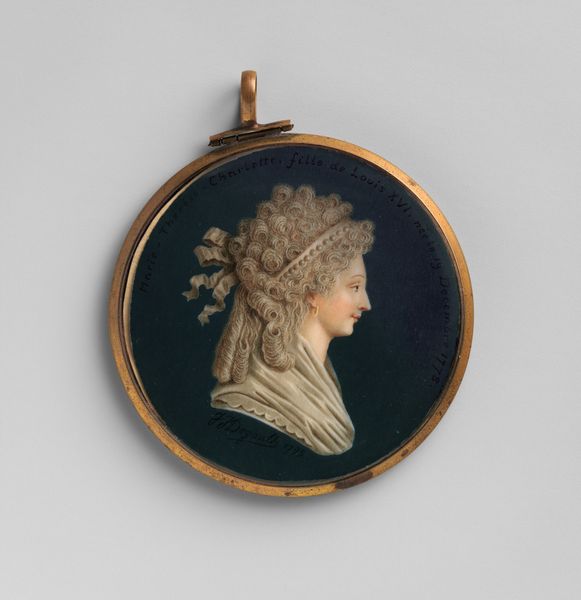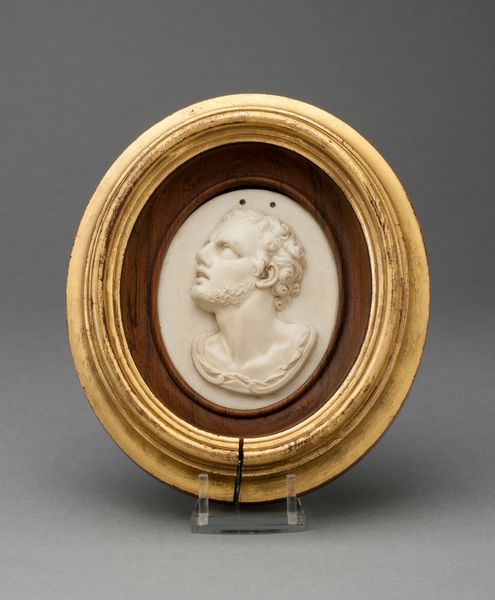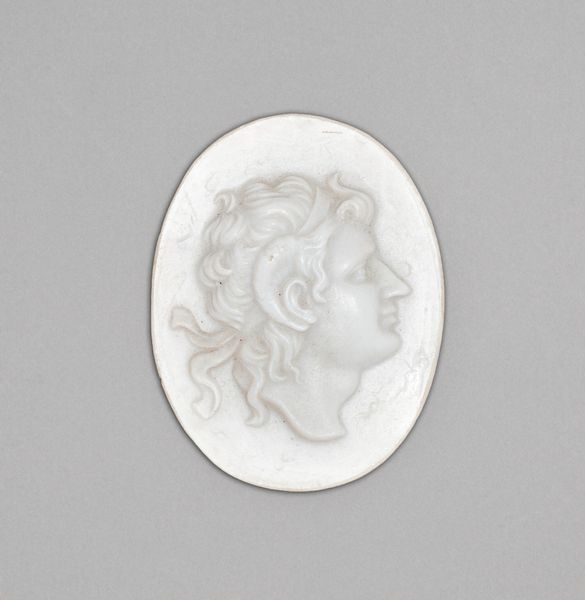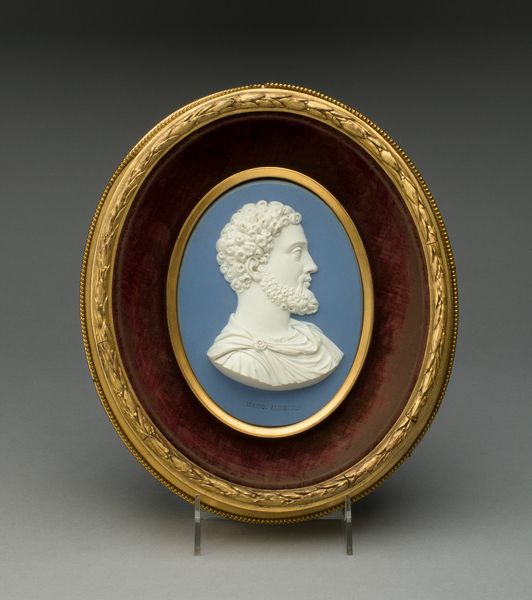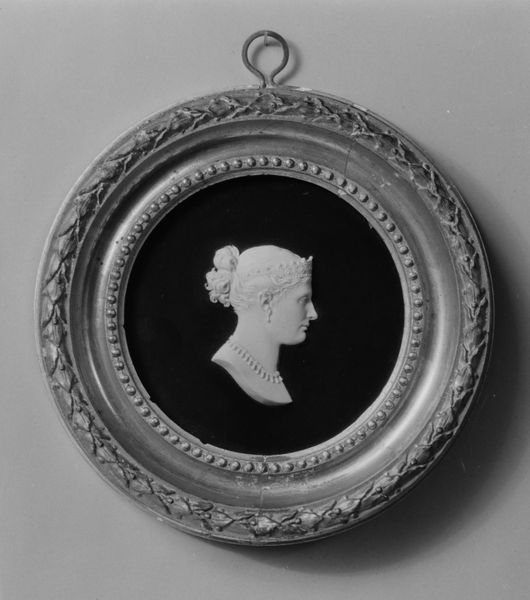
Dimensions: Overall: 1 3/4 × 1 1/8 in. (4.4 × 2.9 cm)
Copyright: Public Domain
Curator: Up next we have a fascinating "Medallion," crafted in the 18th century by James Tassie. It currently resides here at the Metropolitan Museum of Art. What catches your eye about it? Editor: Well, first off, it has this ethereal, almost ghostly quality. The way the white figure emerges from the slightly milky background is pretty captivating. Makes me think of forgotten royalty. Curator: The ghostly quality stems, I believe, from the medium—glass paste. Tassie developed a technique that mimicked the appearance of ivory, a popular material for cameos at the time. But the economic considerations inherent in industrializing portraiture is the true achievement of the work, reducing labour cost and therefore consumption cost. Editor: Glass, huh? Interesting. It feels almost brittle, like something that would shatter if you held it too tight. Funny to think of something so delicate becoming a vehicle of broader consumption. But I suppose, that’s how taste proliferates. Curator: Exactly. Think about the labor involved—not just in the artistic creation but in the mining and processing of the materials themselves. Neoclassicism allowed for a sense of artistic license for a market hungry for portraiture. These factors were often overlooked, overshadowed by the supposed artistry. Editor: Looking at her braided hair and the way she's posed in profile, it’s totally classical. There's a real simplicity here, a clean line. She is really gorgeous, despite, or maybe because, the material is just glass. Curator: Precisely. That deliberate connection to classical antiquity would have appealed to a particular clientele—those with specific cultural capital and political associations who consumed these objects. It’s important to consider who this artist worked for and how this labor reinforces broader social hierarchies. Editor: It’s still gorgeous even with all this... I guess... information. Thinking about where something came from always taints things a bit. In a good way, perhaps? Curator: Absolutely. The layers of context add depth. Understanding the production allows us to truly see and assess its legacy and role. Editor: It shifts the experience from purely aesthetic to something far richer. That ghostly visage feels far more tangible now. Thank you!
Comments
No comments
Be the first to comment and join the conversation on the ultimate creative platform.
